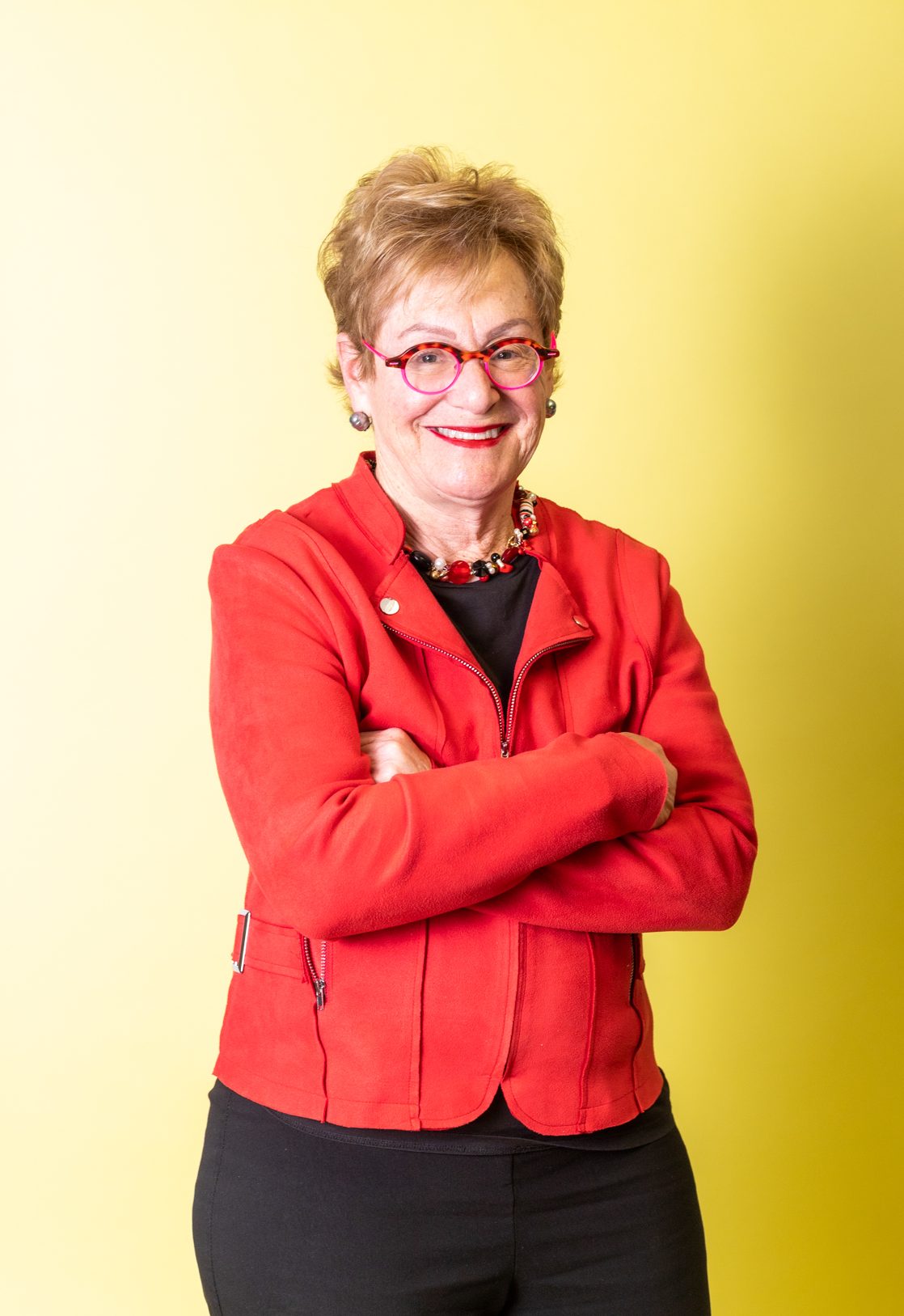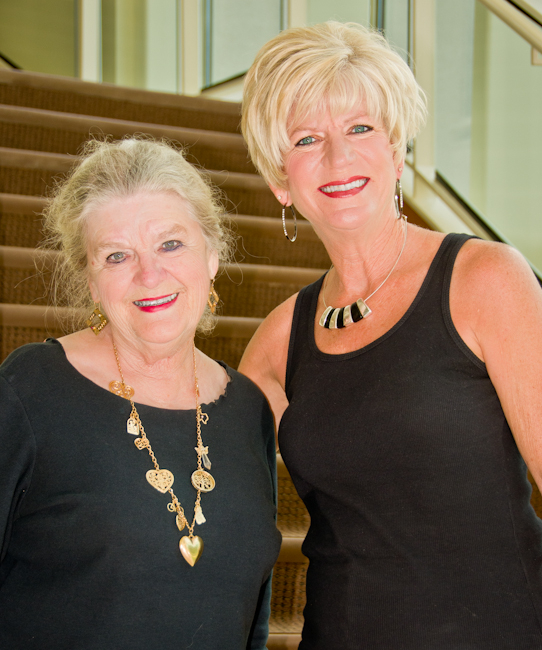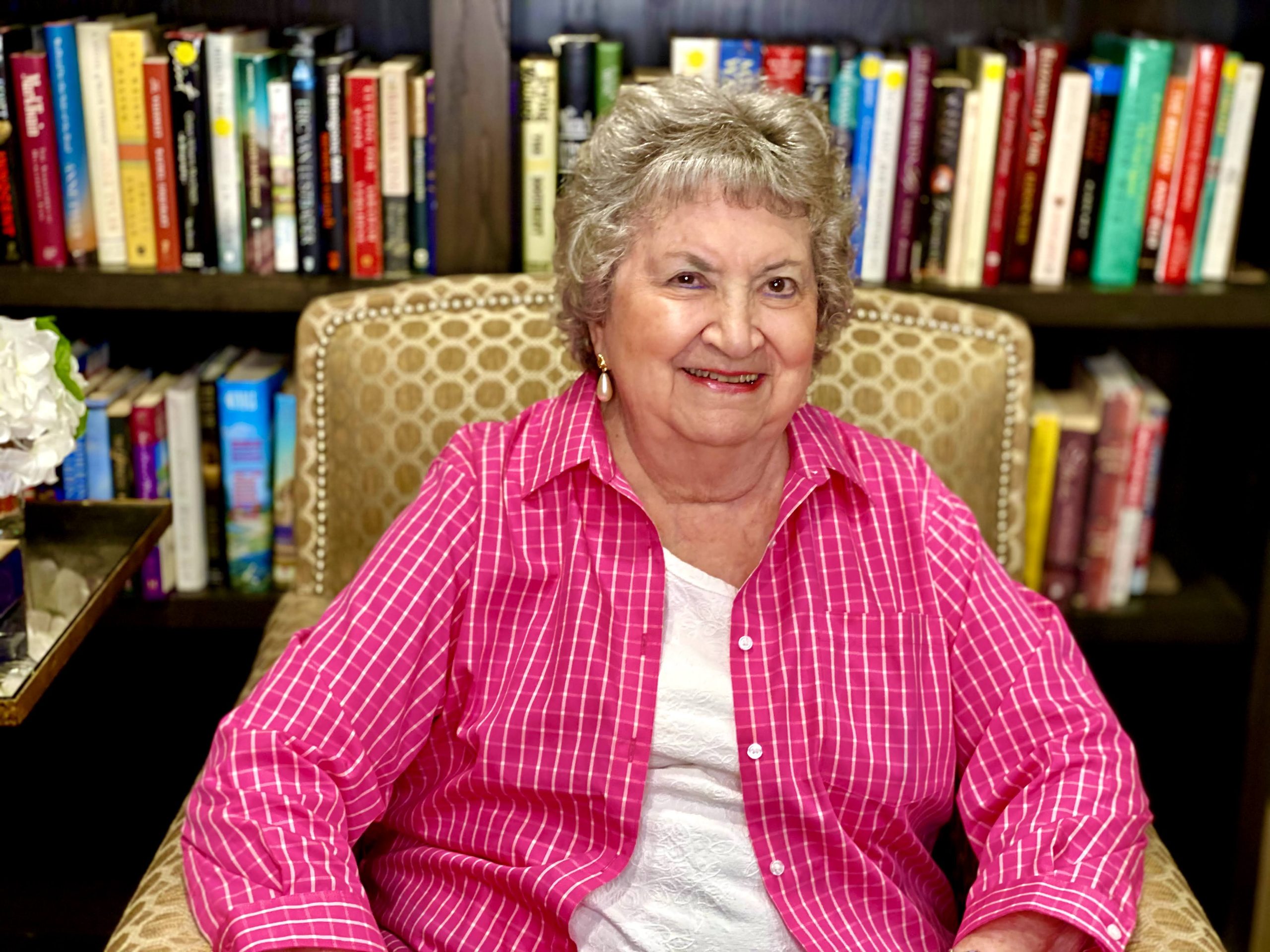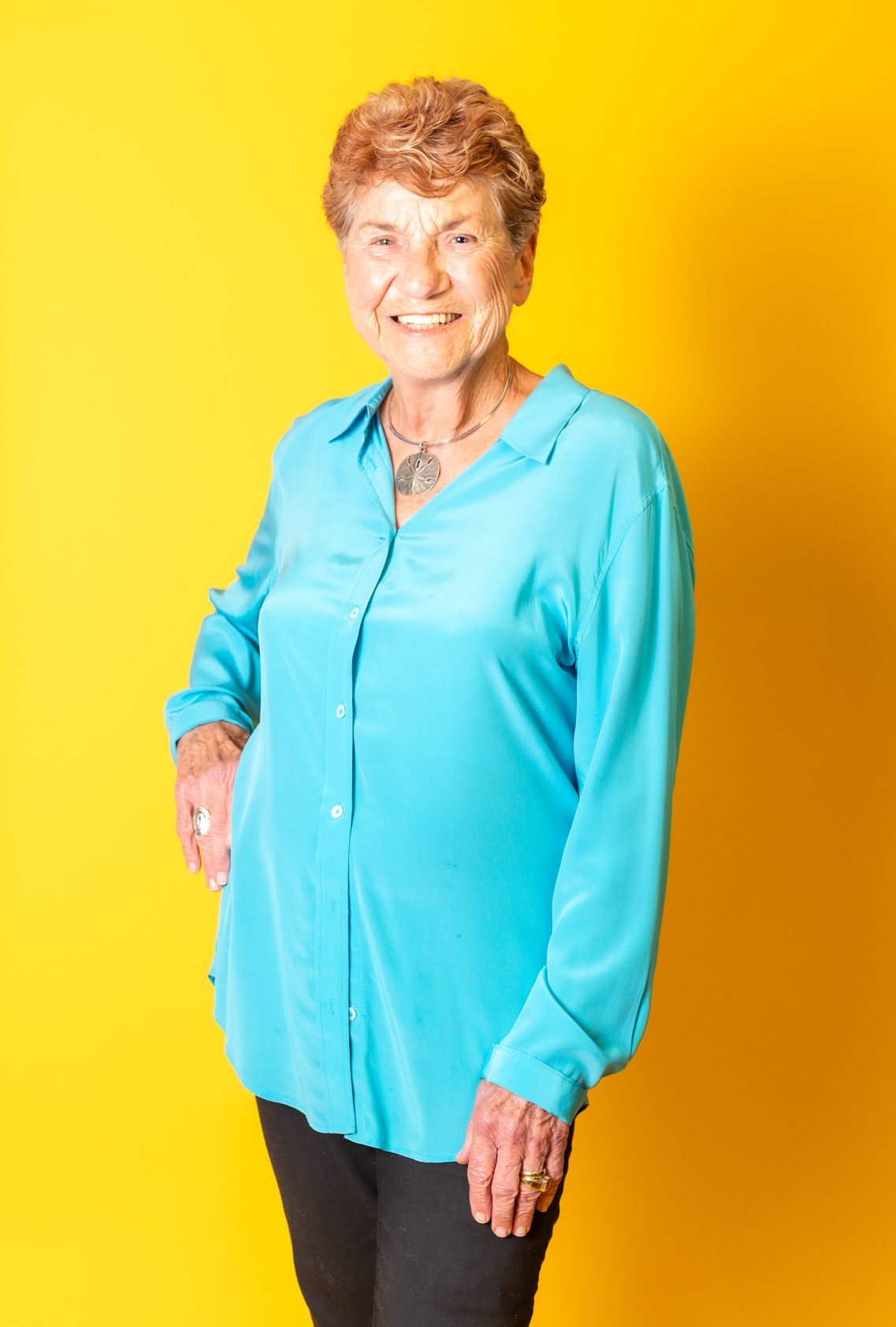A former publisher described “fierce females” as women you’d love to sit next to at a dinner party. Someone you could ask for advice or an amusing anecdote. The kind of woman who took unfavorable circumstances and made them favorable. The kind of woman who learns the rules to rewrite them. The kind of woman who props doors of opportunity open and invites the rest of us in.
Meet the trailblazing women in our neighborhood.

Photography by Jessica Turner.
Five of the top 10 students graduating from SMU’s Dedman School of Law in 1976 were women. Barbara Lynn was No. 1, and another was No. 2.
Yet when it came time to apply for jobs, the women weren’t getting offers. Instead, they were getting asked the same questions. How are you going to work a regular job and have dinner on the table for your husband? Are you going to have children?
They formed the Association of Women Law Students, and Lynn was president.
“We knew that the way to vindicate a right was to make a claim under the law,” she says. “So that’s what we did.”
The women, represented by a young law professor at SMU, sued several firms in Dallas, with one case going to trial. They were hesitant to introduce themselves to the legal community through participation as plaintiffs in litigation, but they had to stand up to the discrimination. Lynn, who’s owned a property near White Rock Lake for decades, ended up the first female associate hired at Carrington Coleman and later became the firm’s first female partner.
As a kid, Lynn thought she wanted to be a firefighter because she “had a really good fire hat.” But she changed her mind and joined debate at her Miami high school. Then she attended the University of Virginia, which was the northernmost school she could find that was affordable.
She didn’t know she would be among the first class of female students to be accepted to the university.
The “very good, favorable” ratio of men to women was about 22-to-1. Many male students didn’t see it that way, so they engaged in a practice called “rolling down the road,” visiting — usually by hitchhiking — all-women schools to find dates. But some men stuck around the university. This included Michael Lynn, who would marry Barbara.
The two went to the Jefferson Literary and Debating Society together, with her attending as a guest because the organization’s bylaws prohibited women from being admitted.
That changed when Michael called a special meeting when a bunch of the board members left for Mardi Gras festivities, and the remaining members voted to allow women to join.
“I wasn’t really an activist,” she says. “I just sort of became that because my personal opportunities were limited by my gender.”
A judge’s position opened in 1993, a seat on the United States District Court for the Northern District of Texas.
“I had good experience, and I thought I would be good at that, and it would be a service to my country,” she says. “So I applied for it. And I didn’t get it, but I went through the process.”
She kept working at Carrington Coleman.
Years later, Lynn received a call from former U.S. Rep. Martin Frost, who said there was a vacancy, and that then-President Bill Clinton would appoint either her or no one.
She decided to apply after two weeks of considerations and calls from Frost, almost daily. When the Senate announced the appointments, Lynn was in Kansas for a mediation and flipped on C-SPAN. Her assigned number wasn’t called. Minutes later, her phone rang; it was the White House, asking what wrong Lynn had done. But there was nothing.
She was confirmed about a week later, and she took the oath of office in February 2000.
For Lynn, the hardest part of being a lawyer was that even with her skills and expertise, she didn’t win every case. As a judge, sentencing is the most difficult task.
“Sentencing is really hard because there’s so many things that you have to consider and look at the whole of it. I think that story of what that’s like is really something that people don’t know,” she says. “And I think people are surprised when they meet me that I’m sort of a regular person. I don’t really take myself all that seriously.”

Photo courtesy of Jill Rumbley Beam.
UUntil an injury limited her activities a few months ago, Rose-Mary Rumbley, 90 this year, was giving two or three speeches daily.
She presented talks each afternoon at all sorts of gatherings: book clubs, country clubs, anywhere seeking an entertaining speaker. Over the years, she estimates she’s given thousands of speeches.
It’s a habit she took up in retirement, after a career in the arts and education.
Much of the content of Rumbley’s messages comes from her knowledge of our city. Her grandfather opened West End Bakery, the first bakery in Dallas. Her mother, who was born in 1894, told her stories about growing up Downtown, seeing the first automobile come to the city and its first fire station.
Rumbley says the history was “dramatic” and recorded it in eight books such as The Unauthorized History of Dallas, published in 1991.
She lived for decades in the M Streets, in a home her father built in 1927. One of her neighbors was J.D. Tippit, a police officer shot and killed by Lee Harvey Oswald.
On Saturdays, Rumbley and other kids spent hours at the Arcadia on Greenville Avenue, watching features, cartoons and The Three Stooges.
“I hated to see it burn,” she says. “That was a great part of East Dallas.”
She attended Robert E. Lee Elementary School, which is now Geneva Heights, Alex W. Spence Middle School and North Dallas High School. The high school asked her to emcee its 100-year celebration in October.
After graduation, she studied theater and speech at University of North Texas, where she met her husband, Jack Rumbley, backstage at a show; he was a percussionist in the band. They married in Denton as soon as they graduated, in 1953, and had two children: Jill and Phil.
Rumbley earned her bachelor’s, master’s and doctoral degrees from UNT.
“They love me there,” she says.
One of her classmates was Tom Hughes, who became producer of Dallas Summer Musicals. He was her connection to the local performing arts organization, which allowed her to act any time there was a role of “a person like me”: Mayor Shinn’s wife in The Music Man, Yente in Fiddler on the Roof. She says no play is her favorite; it’s “whatever I’m in at that time.”
She also appeared in the 1973 film Paper Moon.
Rumbley had several jobs in education. She taught speech and theater at Bishop Dunne 1960-65; that’s where she was when Kennedy was shot. From 1957-77, she was at Dallas Baptist University. The school named a room after her in 2010, and it houses a book collection she donated.
After her teaching career, she became the single-adult director at First Baptist Church.
“Then I retired because I had too many speeches to give,” she says.
She says she’s never feared public speaking but is constantly concerned about pleasing her audience. When the pandemic canceled in-person events, Rumbley hated virtual speeches because she couldn’t gauge the audience’s reactions.
A lifetime in Dallas has shown her that people make the city unique.
“There’s a special aura around Dallas,” she says. “It’s just a special place.”

Photo courtesy of Juliette Fowler Communities.
Through mission work, longtime East Dallas resident Norma Matthews has taught in three countries across three continents.
These opportunities came in part through marriage to Bill Matthews, whom she met during their high school senior year. Eighteen years old and a new driver, she and her family had just moved from Glassboro, New Jersey, to a 20-acre property in Marfa, Texas.
“The girls all hated me because the boys started paying attention to my accent and spending their time making fun of me and trying to copy me and telling me Texas stories,” she says.
Bill sat behind her in English class. His mother was the teacher, and his father the principal.
“He was really my only competition in that class because I had made good grades,” she says.
When Norma graduated, her family couldn’t afford college because her father had used most of their money to start a motel. She worked for a year for the U.S. Department of Agriculture, where she met farmers and ranchers.
A member of one of the ranching families was a physical education teacher at Baylor University. She told Norma that she was too smart not to go to college and arranged for her to start at the Waco institution in 1951, with a Baptist minister loaning her the money to enroll.
While they were in college, Bill would hitchhike to Waco from TCU to visit Norma; they married in 1954.
Bill was ordained as a minister. The two became missionaries and moved to a suburb of Manila in the Philippines. They had four daughters. Norma, who earned a degree in education, taught English as a second language and was an organ instructor at the Methodist deaconess school, while Bill worked at a radio station.
In the Philippines, the Matthewses became interested in working with the United Nations, which was helping rebuild the country after World War II.
They moved to Austin after four years, and Bill and Norma received their master’s degrees, taking turns typing their theses on a portable typewriter. Then the church sent the family to France to learn French so they would be prepared for a three-year assignment in the South Pacific. Bill would be working on a communication project in Fiji, while Norma would teach.
When University Park United Methodist Church asked Bill to be a pastor, they moved back to Dallas. They lived in a house on Walnut Hill Lane for two years, and Norma taught for Dallas ISD. Then they moved to San Antonio; he worked at the Methodist Mission Home, and she taught first grade.
After four years, they returned to Dallas. Norma taught at the now-closed Davy Crockett Elementary School and then Ignacio Zaragoza Elementary. She also became more involved with the United Nations and Vivian Castleberry’s Peacemakers Inc.
They lived on Yosemite Lane near Mockingbird until 2016, when they moved to Juliette Fowler Communities. While packing up their belongings, Norma had the idea to illustrate the history of the Dallas Chapter of the United Nations Association. The two had been president of the organization at different times, so they had 17 boxes of documents.
Norma’s initial thought was to write a 50-page handout.
“It grew and grew and grew,” she says. “And we finally decided to just go ahead and try to make a book out of it.”
The 471-page publication, Hope Over Fear: Bridges Toward a Better World, highlights the tension between pro- and anti-UN sentiments, particularly during the 1960s and 1970s. The couple donated 600 copies to libraries at Dallas County schools.
Bill and Norma received the Eleanor Roosevelt Lifetime Achievement Award last year from the United Nations Association.
“I think that’s been one of our great strengths, that we have been able to stick together all these years because we are interested in the same things,” Norma says. “We like music. We like sports. He wants to trade cars a lot more than I do.”

Photography by Jessica Turner.
Martha Heimberg has spent years working to preserve historic East Dallas neighborhoods. It started after she moved to Swiss Avenue decades ago, when the mansions were much more affordable, and became one of the founders of the Historic Preservation League, which is now known as Preservation Dallas.
“We were urban pioneers,” says Heimberg, who’s on the board of Friends of Aldredge House. “We met at Dorothy Savage’s big table and started working to collect information about the historic aspects of Swiss Avenue and Bryan Parkway.”
Now 81, she lives in Junius Heights with her husband, Ron. The blueprints of the home, built in the first decade of the 1900s, were created by Frank Lloyd Wright.
Though preservation is one of her passion projects, she dedicated most of her career to teaching English.
In her early 20s, she moved to Dallas from Austin and took a job at the Oil and Gas Journal.
“I could always write, from the time I was in high school,” the Lewisville native says.
The job was downtown, and she started taking night classes there, having completed a semester at Texas A&M University-Kingsville. One course on Shakespeare was taught by SMU professor Laurence Perrine, the author of Sound and Sense; any first-year composition student has probably seen it. Perrine, who became Heimberg’s friend, told her how to apply for a student loan to attend SMU.
Perrine’s class fostered in Heimberg a deep appreciation for poetry, and the Romantic and American poets became her favorites; her dog Robert was named for Robert Frost. She earned degrees in English and comparative literature, all the while getting married, having two children and teaching — first on a part-time basis at Dallas College Richland Campus, and then full-time at Northwood University, with students right out of high school.
“I had to really work. I was the show,” she says. “You have to set your hair on fire every day hoping you can wake up a sophomore.”
Heimberg also started and taught at a co-op preschool at a Dallas church. Though she retired from full-time teaching five years ago, she started teaching at Aspire six years ago. Formerly known as LIFT, it offers low-cost classes covering everything from GED preparation to workforce training to early-childhood education. Within the past year, she also began volunteering at Literacy Achieves.
Over the years, she had a variety of non-teaching jobs. Before she came to Dallas, she was a secretary for Boy Scouts of America in Austin. After moving back to North Texas, she did public relations for DART and while there, she implemented the Poetry in Motion program to get poetry published in the trains. She also helped establish the Dallas Theater Critics Forum and 40 years ago, she became a theater critic; her pieces have been published in D magazine, Dallas Weekly, Theater Jones and more.
“I love theater because it takes you somewhere else,” she says.
In her free time, Heimberg enjoys creating art, hiking and being in nature, whether it’s the Santa Fe Trestle Trail or her family’s peanut farm in Calvin, Oklahoma, which she visited every summer during childhood.
“You get outside of this city, or you can just get down on the floodplain,” she says. “And you can see we’re on a prairie. We’re on a Blackland prairie with pink flowers and a city growing out of it.”





